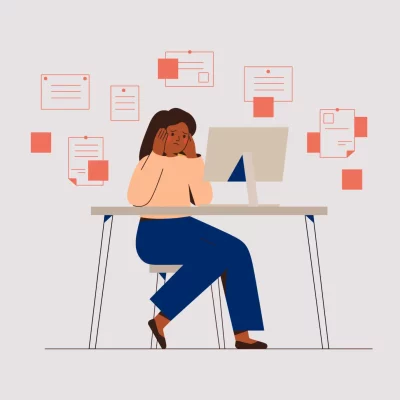Do you push yourself to constantly do more to find success and feel like the pressure is crushing you? Does your never-ending task list cause you to procrastinate getting things done? If this sounds familiar, you may be stressed out, on the verge of burnout, and finally ready to change your routine.
Goals are a necessary part of life, but when they weigh you down or render you ineffective, they become a problem. The truth is that productivity is only something we can sustain by taking the right steps to prevent overwhelm.
In this article, we’ll explore what causes burnout and stress, as well as the 7 steps to find sustainable productivity and balance while still reaching your goals. Read until the end for a bonus step about how your view on rewards can create or hinder long-term motivation.
Common Misconceptions About Productivity
In the age of the “rise and grind” mentality, the idea of productivity seems very all-or-nothing; Either you are constantly working or too lazy to prioritize success. This type of thinking can lead to burnout and misery. Let’s look at a few misconceptions about productivity and how to reframe our thoughts to a healthier perspective.
Myth 1: The more tasks you finish, the more successful you’ll be.
One of the biggest misconceptions about productivity is that the more you do, the better off you’ll be. You believe you will get ahead faster if you work harder and take on more tasks. But the reality is that productivity isn’t just about doing more; it’s also about finding ways to do things smarter.
If you’re taking on multiple projects at once, there may be a way to accomplish what you need to do with less effort or more efficiency. An example of creating efficiency is batching similar tasks together to create a natural flow to your work. This flow helps to let one task generate momentum for the next.
Myth 2: If you skip breaks or lunch, you will get more done.
Another common misconception is that there’s no need for breaks or rest periods while you work. We often think that to be productive, we need to keep going without stopping until our job is finished. However, taking regular breaks is essential for sustainable productivity — it helps us stay focused when tackling difficult assignments instead of becoming stressed out.
A break can improve productivity by increasing the desire for the task itself. When you take a break in the middle of a task, some say you are breaking the momentum you just built in your work. But what it’s doing instead is increasing your desire to return to the task and make more progress than you wanted to before the break. Taking regular breaks is especially helpful for those with ADHD and who have difficulties focusing on tasks.
Myth 3: You must give up all your free time and relationships to succeed.
Believing that productivity means working late hours and sacrificing leisure time is a sad reality of the hustle-culture mentality. Many people think they must work well into the evenings or on weekends and neglect relationships to be productive. This mentality can lead to burnout and loneliness over time.
It’s important to take breaks, find a balance between work and life, and prioritize rest when it’s needed for sustainable productivity.
Overall, burnout can occur when these misconceptions lead us to push ourselves too hard without giving ourselves enough time to rest, recharge, refocus, and reenergize. It’s important to remember that productivity isn’t only about how many tasks you can check off; it’s also about how well those tasks are completed while still caring for yourself.
Major Causes of Feeling Stressed Out and Burnout
Stress and burnout are common causes of unsuccessful productivity, particularly when our expectations of ourselves are too high.
Common causes of stress and burnout in the workplace include one or more of the following:
Unrealistic Goals
Unrealistic goals can cause stress when the tasks we’ve set out to finish seem impossible or insurmountable. It’s important to be aware of our limitations. Although ambition is good, setting realistic expectations will help us reach our goals without feeling overwhelmed.
Too Many Responsibilities
An overload of responsibilities can also lead to burnout. Trying to do too much at once or take on tasks we aren’t suited for can lead to feelings of frustration and inadequacy.
Lack of Control in Decision Making
A lack of control over decision-making can cause stress if employees feel they have no say in how their time is spent, or their workload is managed. This feeling may be exacerbated if employees think their superiors are not valuing them.
Lack of Connection and Purpose
Feeling disconnected from colleagues or lacking purpose in your work can also lead to burnout. Having meaningful relationships with coworkers helps create an environment where everyone feels supported and valued. This connection with coworkers leads to better collaboration and more productive outcomes overall.
Negative Impacts of Long-Term Stress
According to the Mayo Clinic, long-term exposure to the body’s stress response can be detrimental.
Examples of health issues stress can cause are:
- Anxiety
- Depression
- Digestive problems
- Headaches
- Muscle tension and pain
- Heart disease, heart attack, high blood pressure and stroke
- Sleep problems
- Weight gain
- Memory and concentration impairment
Stress is a normal part of life, but when stress doesn’t ease up, chronic, unrelieved stress can have major implications on our health. With that said, there are practical techniques we can use to reduce stress, specifically in our work life, to help find balance while working toward success.
The 7 Steps to Sustainable Productivity
Now that we’ve cleared up some of the biggest misconceptions of productivity and causes of burnout, let’s dive into seven steps for sustainable productivity. Each step is important to ease the pressure associated with large goals so that you can sustain your efforts long-term. These steps are necessary to avoid overwhelm, and they set you up for exponential growth and progress while staying healthy and happy.
1. Prioritize Your Tasks
There are many systems for how to organize your to-do list. There is no “right” way to do this; sustainability is trial-and-error and highly individual. Try a few of our examples until you find one that suits you best.
Personal Kanban – splits tasks into three visual categories (to-do, in-progress, done) to keep an overall view of your work.
Eat The Frog – prompts you to complete the hardest task first to build confidence and reach your goals.
SMART Goals – (Specific, Measurable, Assignable, Realistic, Time-bound): this tried-and-true method helps you make specific goals with a timeline to accomplish them.
The Action Method – splits tasks into three categories (action steps, references, and backburner items) and lets you see all the projects you want to complete.
Must, Should, Want – allows you to split tasks based on different requirements and balance. Your list should consist of items under the categories:
“I must…”
“I should…”
“I want…”
Time Blocking – breaks tasks down into single-tasked and time-controlled sessions that claim it can help you work faster.
Getting Things Done – a system that requires a large, ongoing list of all tasks that need completing. From that large list, you schedule tasks to be completed. The big list of tasks and scheduling of tasks frees your brain from remembering everything that needs to be done, thus creating more room to focus on the task.
The Pomodoro Method – a timer is used to break up the workday. Usually involves 25 minutes of work and a 5-minute break; once you complete 3-5 cycles, you can take a longer break. Longer sessions of 50 minutes and 10-minute breaks can also be used. Here is a link for a Pomodoro timer in your web browser to use so you can stay off your phone.
The Eisenhower Matrix – prioritizes tasks based on a 4-quadrant system based on urgency and importance. This method helps you be more effective by managing your time better.
Zen to Done – created as an improved system to the Getting Things Done method. The GTD method could be more structured for some, so Zen to Done gives you that structure and helps you to accomplish tasks without feeling overwhelmed by your large brain-dump task list.
Once you find an organization method that suits your needs, it can forever change how you complete your tasks more efficiently.
2. Take Regular Breaks
Take regular breaks throughout your day to rest, recharge, and refocus when needed — this can be anything from a few minutes to an hour or two. Breaks help keep us in tune with our body’s natural rhythms to stay productive without burning out. And as mentioned earlier, taking breaks can increase focus and the desire to complete tasks.
3. Break Big Projects Down into Smaller Goals
Breaking big projects into smaller tasks can help you stay focused and motivated rather than overwhelmed by endless tasks within a large task. When you know it will take a long time to check a box off your list, it can lead to project avoidance and stress. If you break large to-do items down into smaller to-do’s, you can see your progress more easily, which can keep you motivated to move on from one task to the next.
4. Prioritize Self-Care
It may seem like self-care has nothing to do with productivity, but that couldn’t be further from the truth. Productivity isn’t just about how many tasks you can check off your list; it’s also about caring for yourself. It is crucial to rest, recharge, refocus, and reenergize.
Some examples of self-care include eating healthy, exercising regularly, getting adequate sleep, and finding ways to relax daily. These efforts leave space and energy to make progress on your goals.
5. Schedule Time for Fun
Schedule time in your day or week for fun activities, relaxation, and leisure — this will help you break up the monotony of work and give you something to look forward to during a busy day. Related to self-care rituals, scheduling time for fun activities can be a refreshing way to reduce stress, increase happiness, and create space from your job long enough that you may even miss it.
6. Put Technology Away
It’s easy to get distracted by our phones, emails, social media notifications, etc., during the workday, but these distractions can prevent us from staying productive. Checking your phone or iPad during a task kills your focus because it takes a lot of mental energy to switch back to the task at hand. Try putting away technology when you focus on tasks to stay in the moment and get more done without distraction. You can even schedule time for emails, checking messages, or checking your social media to prevent getting lost in a random Instagram scroll and preserve your focus on what you need to get done.
7. Ask for Help When You Need It
Asking for help isn’t a sign of weakness — it’s a sign that you are taking initiative and recognizing your limitations. Don’t be afraid to seek help when needed; this can help lighten the load and give you more time to focus on other projects.
For example, if you have a task, you can’t figure out how to do, and you’ve already spent the last hour trying several ways to solve the problem but to no avail, asking for help can prevent you from wasting lots of time reinventing the wheel. Although it can be important to try to solve issues on your own, let the knowledge of others help you to be more efficient when you hit a wall in your efforts.
Bonus Step to Productivity
Extrinsic rewards (prizes, gifts, awards, recognition from management) can make you dislike your work more. Extrinsic rewards are not a sustainable method for increasing productivity. So what creates a sustainable work ethic?
An intrinsic reward system is the key to sustainable success. Learning to find satisfaction from the effort you put into a project will give you the dopamine your body requires to keep motivated for long-term effort.
Conclusion
These seven secrets will help you find sustainable productivity to crush your goals without burning out. Productivity isn’t just about doing more; it’s also about finding balance while still accomplishing what needs to be done. Remember: rest, recharge, refocus, and reenergize! By following these tips and taking better care of yourself, you’ll be able to achieve your goals in a more efficient, balanced way.
In addition to all the techniques discussed above, sometimes underlying stress that goes much deeper can be part of feeling stressed out and frustrated. The issues causing a lack of focus, motivation, and energy to accomplish goals or tasks can sometimes require help from a counselor to feel relief. If this sounds like you, find your counselor here, or call us to help you get started. We are here to help you find strategies to reduce stress and create systems to help you live a healthier, more balanced life.








